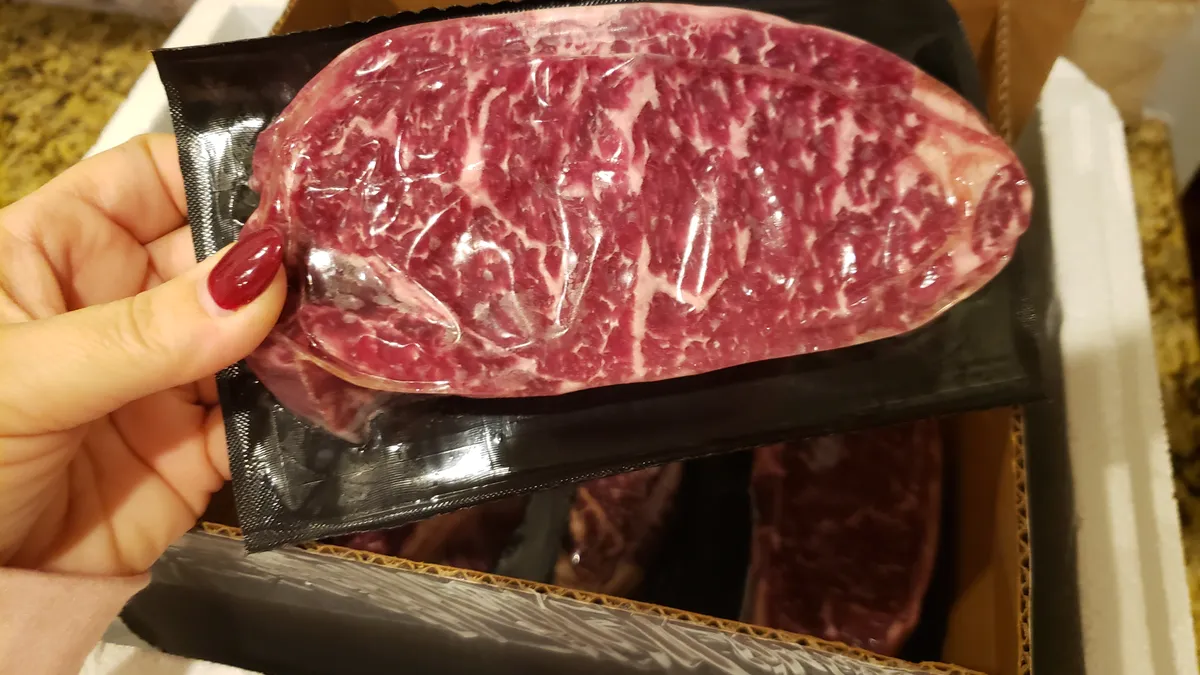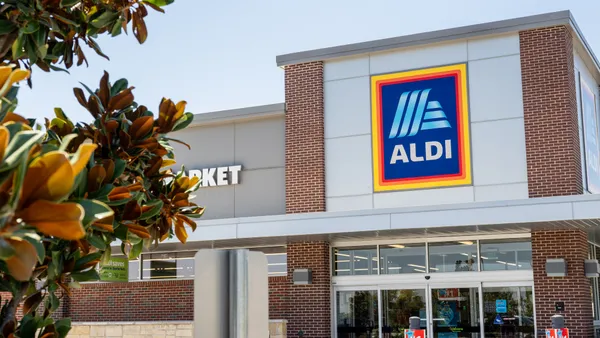Dive Brief:
- Online meat services gained droves of new customers during the early months of the pandemic and have managed to keep sales high in the ensuing months, according to data from Second Measure.
- Omaha Steaks, a company known primarily for holiday gifting, saw month-to-month sales surge 68% in April while Crowd Cow, which operates a membership model, grew 98% during the same month. Both companies’ year-over-year sales remained well above 100% into October. Aiming to capitalize on high demand, Sam’s Club is now shipping steaks and grass-fed beef to shoppers nationwide.
- Online services capitalized on supply constraints at retail and from commodity producers earlier this year and are benefitting from growing demand as well as subscription models that lock in customer loyalty.
Dive Insight:
Online meat services aren’t going to make a major dent in grocers’ meat sales anytime soon. But they do underscore shoppers’ growing comfort level with having fresh meat shipped to their doorsteps.
ButcherBox and Crowd Cow were founded in 2015, and both appeal to shoppers looking for high-quality cuts sourced from small-scale farmers that humanely raise their animals. Both services operate a subscription model that has helped them keep sales high months after the run on meat early in the pandemic pushed consumers toward their platforms. According to Second Measure, 41% of ButcherBox customers who made their first purchase in March made another purchase six months later, while 11% of Crowd Cow customers did the same.
Omaha Steaks, which doesn’t operate a subscription model, has seen monthly sales and consumer retention decline but is still seeing year-over-year sales well above average.
Sam’s Club, meanwhile, is looking to capitalize on growing online demand by expanding its ship-to-home meat assortment. This includes a December-only sale of 6 pounds of organic beef for $40 and a dozen 10-ounce New York Strip steaks for $190. Club members get additional savings.
The pandemic has lifted the meat category as a whole, with sales up 28% between March 15 and Oct. 4 compared to the same period in 2019. And it’s helped lift elevate direct-to-consumer meat into a regular purchase rather than just a once-in-a-while splurge or holiday gift.
"Spending trends during the pandemic suggest that instead of viewing DTC meat as a one-off holiday gift, consumers now see it as a necessary service like meal kits and grocery delivery," Second Measure noted in a blog post.
Although consumers have traditionally relied on their local meat cutters to help them tell the difference between a T-bone and a New York Strip, retailers over the years have been slowly shifting away from full-service departments. They’re also having a harder time recruiting meat professionals. Online, shoppers can peruse supplier profiles, learn about cuts of meat and browse recipes. ButcherBox has a YouTube channel with more than 45,000 subscribers that includes videos with grilling tips and sourcing profiles.
Retailers nationwide sell fresh meat as part of same-day online services, but they could offer separate educational subpages and marketing deals. Retailers are also expanding ship-to-home services, where meat could play a prominent role.










